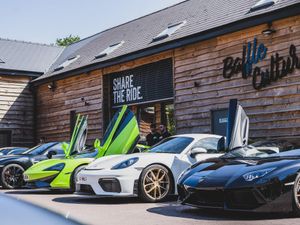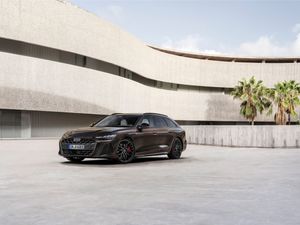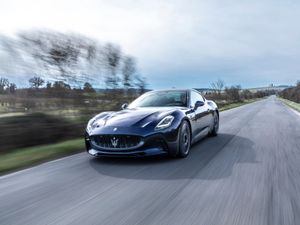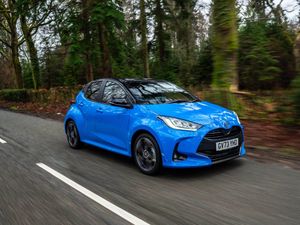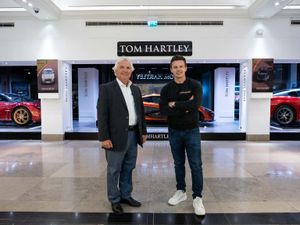Merger that killed our car industry
It was all smiles for the media, but behind the facade lay bitter acrimony. Sir George Harriman, chairman of British Motor Holdings, and Sir Donald Stokes, his counterpart at Leyland Motors, beamed as they announced the merger of the two automotive giants.
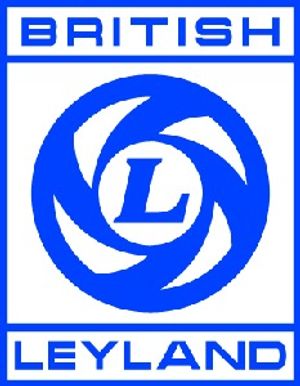
Fifty years ago today, the pair put on a show of unity to explain how the new British Leyland Motor Corporation was going to become a dominant force in the world industry, pumping out a million cars a year from 40 factories. Leyland's marketing and research expertise, coupled with BMH's huge production facilities, would create an industrial powerhouse to rival the American giants.
It was the culmination of months of negotiation and cajoling by then prime minister Harold Wilson and technology minister Tony Benn. Alarmed by Britain's postwar industrial decline, they believed the answer lay in mergers to create giant conglomerates to take on the world. The aim was to restore Britain's position as the world's largest car maker, ahead of the Unites States. To say that things did not pan out this way would be something of an understatement.
Little more than a year later, in a dispute that summed up all that went wrong with this ill-fated venture, production of the Triumph 2000 saloon car ground to a halt as three different unions argued among themselves over who should tighten the dashboard screws.
The British Leyland story would serve as a terrible warning that bigger did not always mean better, and that Government's attempts to intervene in industry were fraught with danger. For all the initial bravado, the company would become synonymous with shoddy workmanship and industrial unrest, rivalled only by that other staple of the 1970s stand-up comic, British Rail. Within a few years the shares issued for the new corporation would be declared worthless as the Government, which had encouraged the formation of this exciting new group, had to step in to save it from total collapse.
With hindsight, the merger was destined to fail from the start. BMH executive Joe Edwards made little effort to conceal his distaste for the way Leyland chief Stokes conducted negotiations, refusing to meet him at one point. Edwards and Harriman only reluctantly agreed to the merger when government mediator Sir Frank Kearnton told them the alternative was a hostile takeover.
Even before the merger, British Motor Holdings – itself the product of a series of mergers over several years – was riven with in-fighting and unrest. The Nuffield Group, made up of Oxford-based Morris, MG, Wolseley and Riley merged with Austin in Longbridge in 1952 to form British Motor Company, which then took over Jaguar to form BMH. Attempts to rationalise the model range were frustrated by tribal loyalties among the respective workforces, which resulted in the bizarre situation of identical cars being built in separate factories under different brand names, and sold through separate dealers. And this internal bickering was about to get much worse.
BMH's product line was also a curious mixture of innovative, hi-tech front-wheel drive models such as the 1100 and 1800, which were critically acclaimed but mistrusted by fleet buyers, and outdated relics such as the Morris Minor, Morris Oxford and Austin Cambridge. The Mini, which stole the show on its launch in 1959, sold like hot cakes. The only problem was that each car was sold at a loss.
Leyland, by contrast was a smaller, and ostensibly better-run enterprise, specialising in commercial vehicles and niche prestige products such as Rover and Triumph. The theory was that Leyland's management expertise and export success would rub off on BMH, which for all its faults was still selling vast volumes of cars.
In truth, both companies were punching above their weight, having being shielded by the captive but disappearing market of the British Empire. Entry into the EEC – which Stokes supported – meant the corporation would have to compete on a level playing field with its rivals from France, Germany and Italy.
It was said Stokes wanted to pull out of the merger soon after agreeing the deal. He spoke of his shock that there were no models in the pipeline to replace its ageing range – apart from the Austin Maxi, another niche oddball which was big on technology, but had little mainstream appeal.
The now Lord Stokes saw how American-owned rivals Ford and Vauxhall had honed a successful formula of simple, basic engineering liked by fleet managers, combined with fashionable transatlantic styling, and decided that was what was needed – fast. Roy Haynes, who had designed Ford's successful Cortina, was hired to come up with a replacement for the Morris Minor in just 18 months. But shortage of time and funds meant that the new Morris Marina carried over much technology from the Minor, which dated back to 1948. Derided by the critics from its launch in 1971, the Marina was cheaper than its rivals and actually sold reasonably well, but it also so became a by-word for mediocrity and did little for the group's struggling image. Stokes later admitted it was a "bloody awful" car.
BL pinned all its hopes on the next new model, which would replace the popular but ageing Austin 1100 and 1300. Unlike the Marina, this was no low-budget rush job, and the company threw everything it had at the project. Stokes said he wanted Austin to be the company's hi-tech brand that set trends rather than followed them, but this hubris would be the undoing of the new Austin Allegro. Innovative, it certainly was, but BL quickly found that the public had no desire to own a car with gas suspension and a square steering wheel. What they did want was a hatchback, like the VW Golf, but BL blocked this, fearing it might take sales away from the Maxi. Reports about wheels flying off, windows popping out, and police forces swapping square steering wheels for round ones quickly turned the Allegro into a laughing stock.
While the merger created one of the biggest car manufacturers in the world, its different brands and models ended up competing with each other. The Marina, Allegro, Maxi and 1800, as well as the slightly more upmarket Triumph Toledo and Dolomite, all fought it out in the mid-range family market, while Rover, Jaguar and Triumph took each other on in the executive sector. And the different factions stubbornly refused to share technology.
This all took place to the backdrop of a period of unparalleled industrial unrest across the UK, and the car industry was far from immune. Derek "Red Robbo" Robinson, the union convenor at Birmingham's Longbridge plant, was said to have instigated 523 strikes in 30 months. Even when people wanted to buy a Marina or Allegro, they often couldn't because the workforce was on strike, so customers switched to Ford, Vauxhall or Renault, and never looked back. A demoralised and disaffected workforce meant that even when BL had a hit on its hands – the Jaguar XJ6 and Rover SD1 spring to mind – appalling reliability and build quality led to unhappy customers.
British Leyland was caught in a perfect storm between bickering management, rampant unions, mediocre products and intense competition. In April 1975, little more than seven years after it was formed, the group collapsed after running up debts of £750 million. Harold Wilson and Tony Benn stepped in once more, this time to nationalise the company they had helped create. Humiliated, Stokes departed, surely wondering how things had gone so wrong.
In 1977, Britain became a net importer of cars for the first time, a position from which it would never recover. BL soldiered on, gradually broken up before eventual privatisation in 1988.
Today, the Austin, Morris, Rover and Triumph brands are long gone. Jaguar and Land-Rover are owned by the Indian giant Tata, while the MG brand survives only on cars built in China.
But there is still one part of the empire still in British hands. Ashok Leyland, BL's Indian subsidiary, is now owned by the British-based Hinduja brothers, and now owns the Yorkshire-based bus manufacturer Optaire.

